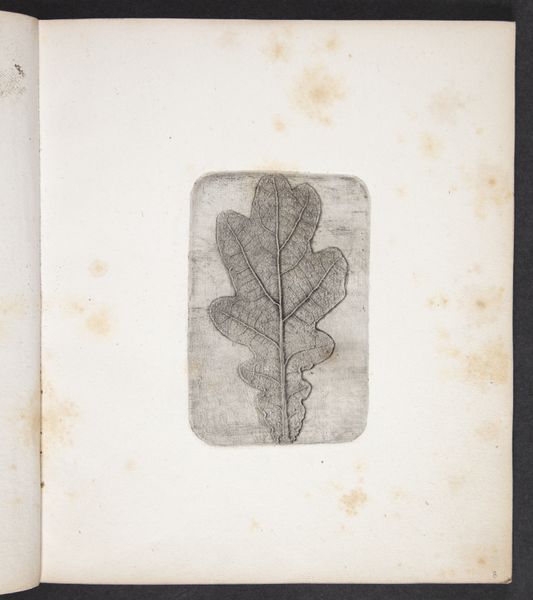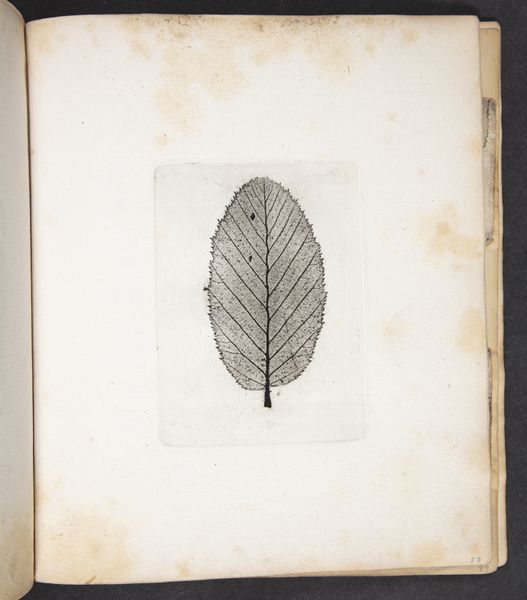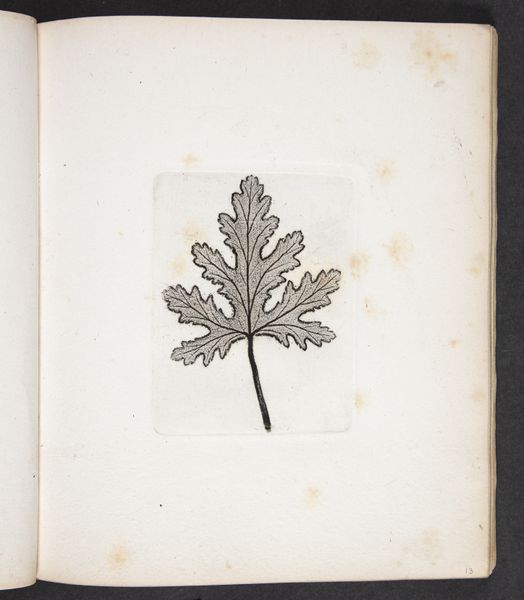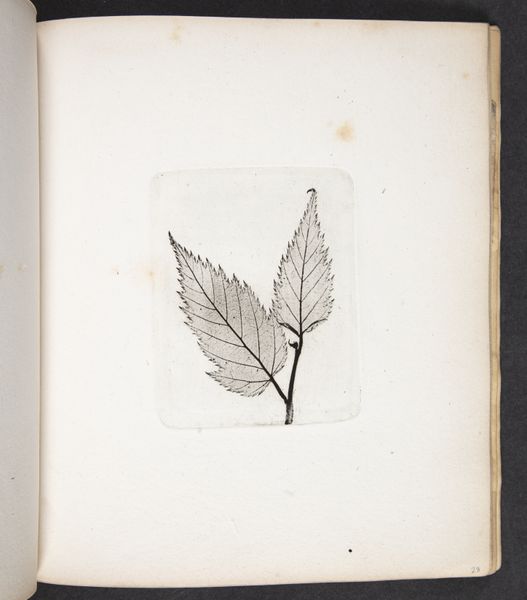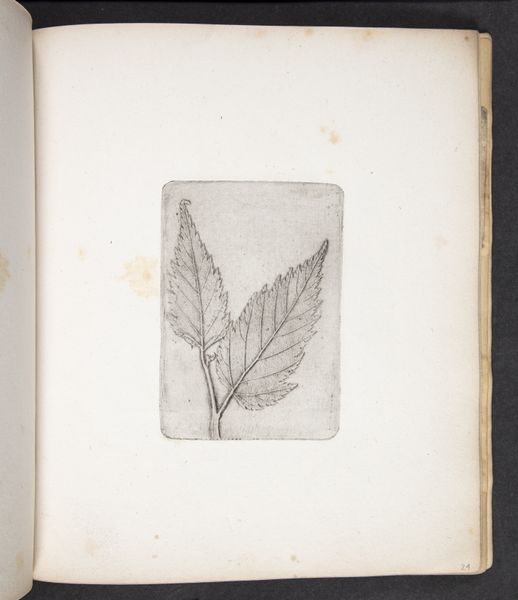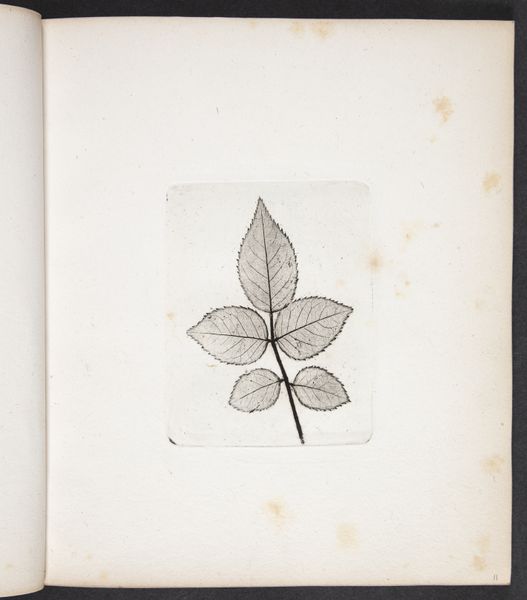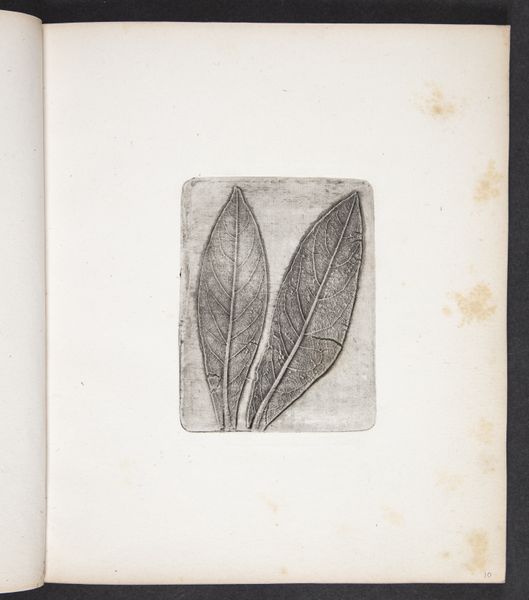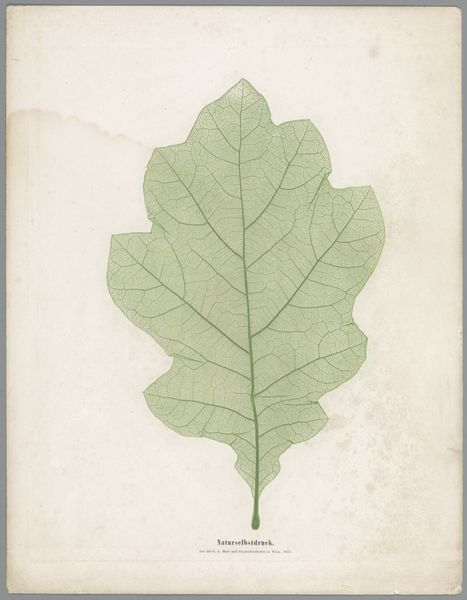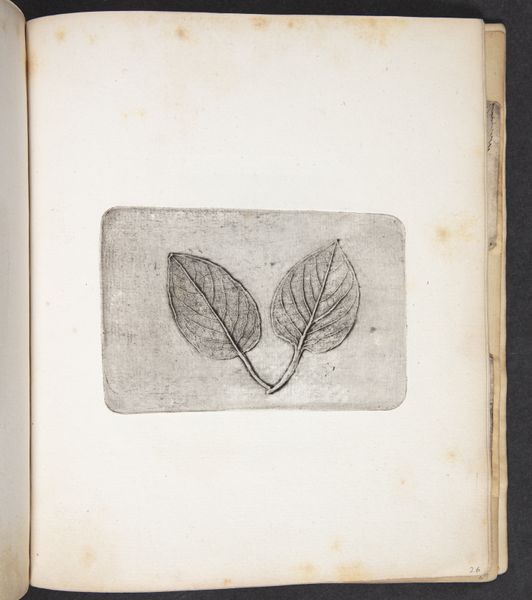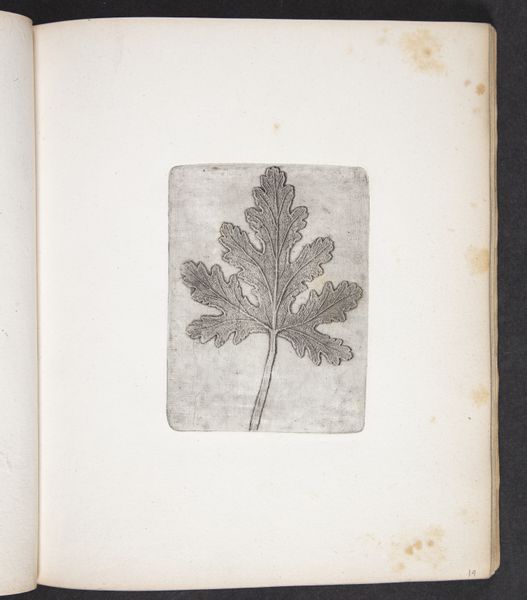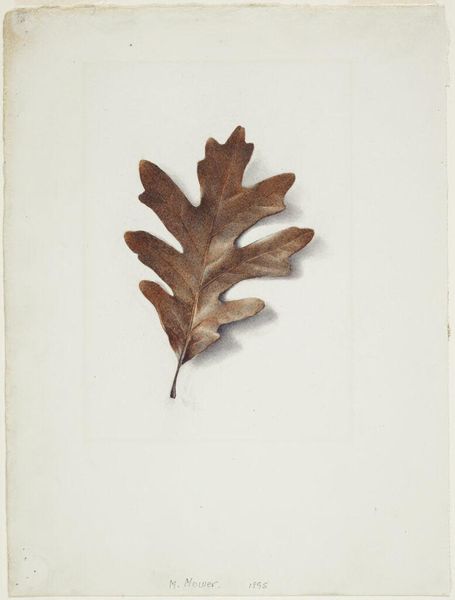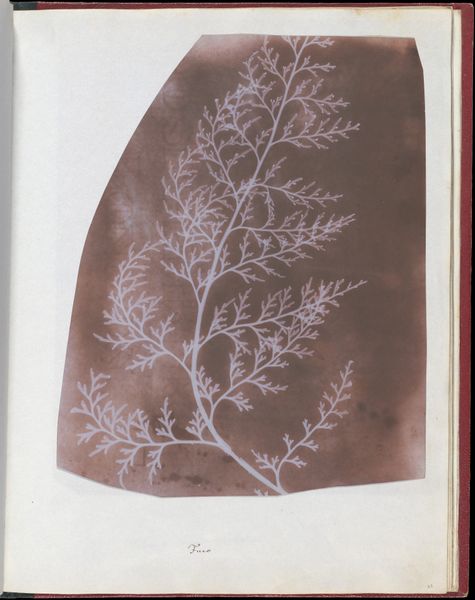
drawing, print, paper
#
drawing
# print
#
paper
#
realism
Dimensions: 207 mm (height) x 182 mm (width) (Bladmål), 103 mm (height) x 77 mm (width) (Plademål)
Editor: Here we have Peter Larsen Kyhl's "Aftryk af egeblad," created around 1833. It's a print or drawing of an oak leaf on paper, quite simple but with amazing detail. It feels like such a direct connection to nature. How would you interpret this work within its historical context? Curator: It’s fascinating to consider this print in the context of early 19th-century Denmark. What we might see as a straightforward representation was emerging in a very particular time. Consider that this period saw growing interest in natural sciences, reflected in art and literature. What role do you think images like this, carefully depicting nature, might have played in Danish society? Editor: Maybe it's connected to national identity, portraying the Danish landscape through this specific oak leaf? Were these images used in educational settings? Curator: Exactly! Think about the emerging Danish national identity and the growing middle class. Nature, especially local flora, became a source of pride and knowledge. These types of prints may have been included in educational materials or circulated among intellectual circles, promoting a sense of shared identity and cultural value of observation. Do you see it having relevance to museum display? Editor: Perhaps as an example of a bygone printing technique, highlighting the artist's process in communicating this information. It might bridge gaps between science and art. Curator: Precisely. Kyhl’s work embodies that intersection. The museum thus also takes on a role. It legitimizes particular types of knowledge. The way this single oak leaf print, seemingly simple, speaks volumes about the intersection of art, science, and nation-building in 19th century Denmark. Editor: I didn’t consider that aspect of nation-building initially. Now I appreciate the piece even more, seeing how it functions in society. Thanks!
Comments
No comments
Be the first to comment and join the conversation on the ultimate creative platform.
